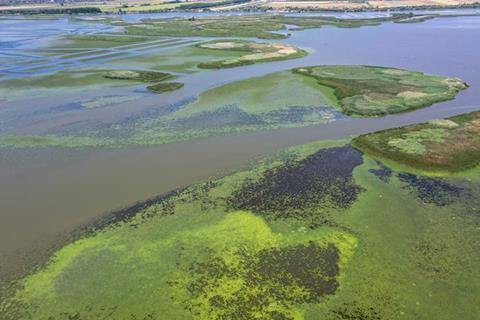Diverse macrovegetation can provide heterogeneous habitats for benthic diatoms. Researchers from the CER Institute of Aquatic Ecology and the University of Debrecen, together with specialists from the Middle-Tisza Water Authority studied the importance of microhabitat heterogeneity (emergent, submerged and floating macrophytes) in maintaining diverse periphytic diatom assemblages. Their results were published in the journal Hydrobiologia.

Human well-being and good quality of life are based on the biodiversity of ecosystems and there is an increasing demand to reduce the knowledge gap on the variety of life on Earth. At the same time, an ‘invisible tragedy’ is taking place in freshwater habitats that are highly threatened by the loss of diversity with species disappearing, threatening the functioning of the ecosystem.
While more information is available on the processes occurring in plant, animal or microbial communities that are important to human communities, much less is known about the vulnerability and exposure of other groups, including microalgae, which play a key role in ecosystem services.
The situation is further complicated by the fact that there is a delicate balance between protecting and “exploiting” multipurpose freshwaters that take a lead in the daily life of human communities. While good ecological condition is essential for the maintenance of diverse communities, water management works such as water level regulation, thinning of macrophyte communities or sediment dredging are important for human recreation in these multipurpose lakes and reservoirs.
Complex system
This is no different in the largest artificial, multipurpose shallow reservoir of the Carpathian basin, Lake Tisza, which is a UNESCO World Heritage Site. As in other lakes, the composition and biomass of the macrophyte communities form a complex system with benthic and metaphytic microflora assemblages. However, the extensive macrophyte vegetation needs to be thinned at least once a year.
In the study, researchers highlighted that the macrovegetation belonging to different life form types, i.e. emergent, submerged and floating, contributes to the taxonomic and trait diversity of the microflora in a different but equally important way.
Almost one-third of the benthic diatoms occurred on only one type of aquatic plant, pointing to the unique microhabitat that these macrophytes can provide for microalgae. Besides the microhabitats, however, the regular water level control of the lake also affected the biodiversity of the microalgae, promoting the spread of diatoms between the basins.
Delicate water management
These results highlighted that the protection and maintenance of benthic microalgae biodiversity in multipurpose lakes requires delicate water management planning and implementation, but at the same time it is unavoidable for the functioning of a healthy ecosystem.
More broadly, the publication also draws attention to the contradiction that occurs when the EU Water Framework Directive and the Habitats Directive are implemented in parallel in a given area: nature conservation focus primarily on the conservation of habitats for macroscopic aquatic or aquatic-related organisms, while aquatic microscopic communities are not taken into account, and thus the provision of suitable conditions is not a priority in these directives.
This may inadvertently undermine one of the main objectives of the EU Water Framework Directive, namely to achieve good ecological status, as it focuses on the aquatic communities themselves, regardless of size.







No comments yet